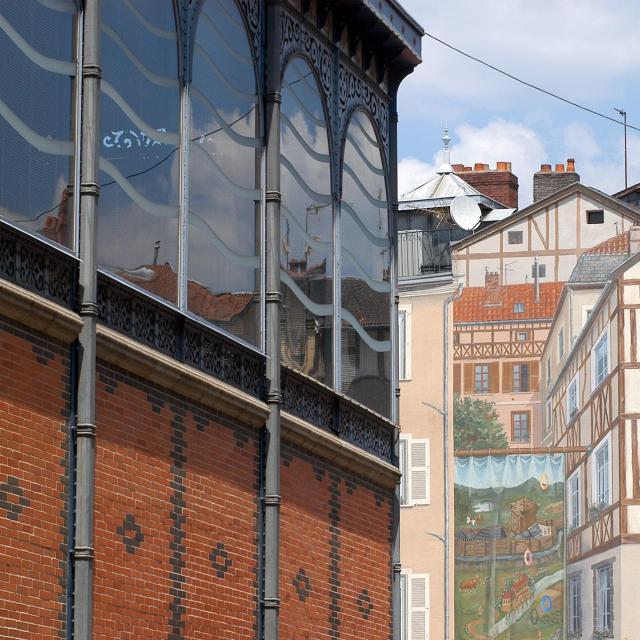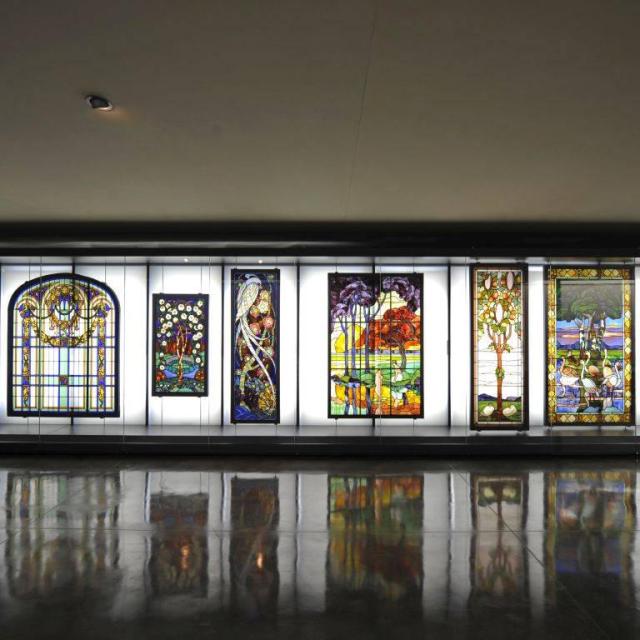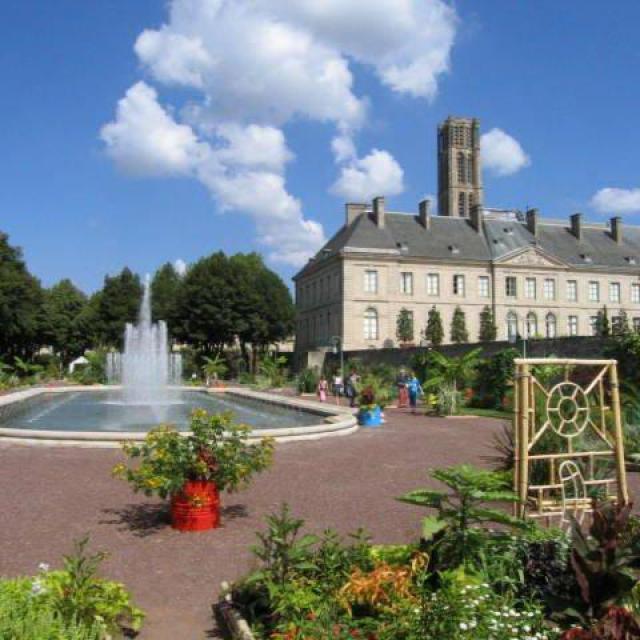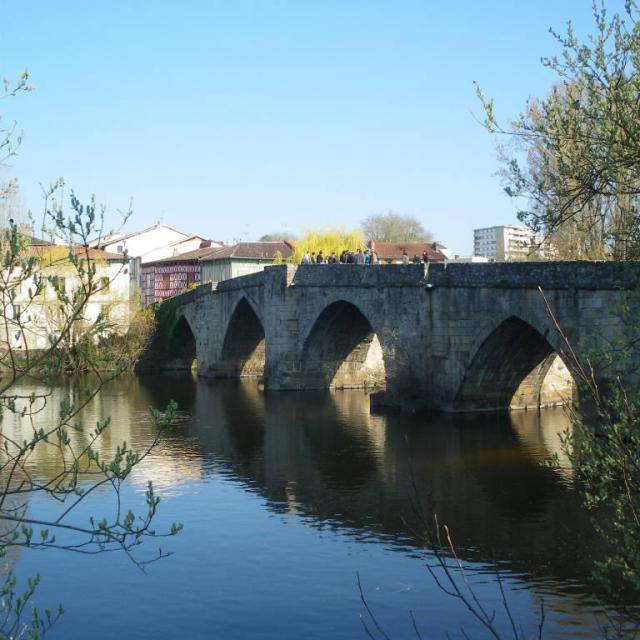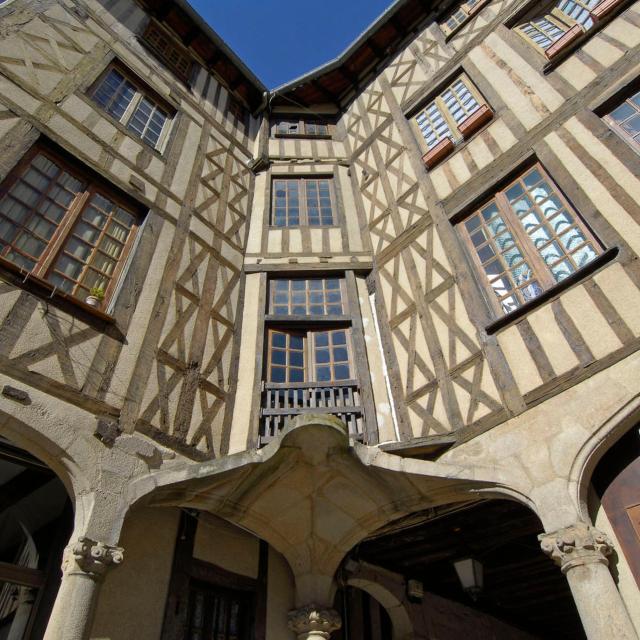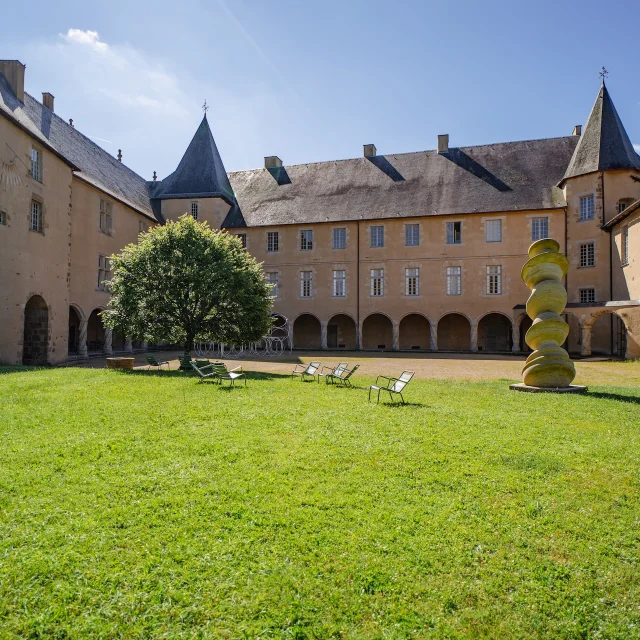Cobaty trompe l'oeil
or the anecdote in the windowSince 1993, the 100 m² fresco created by Cobaty Limoges has been illustrating major events in the history of Limoges.
If you’re observant, you’ll notice a detail… Look out of the window at the model Renoir is painting…
In his last years, around 1895, Renoir devoted himself mainly to painting nudes, in which models were increasingly present.
That’s it?! You’ve got it!
The model at the window is lightly clothed, but this is not the case on the smaller canvas Renoir is painting (our Auguste is too strong!). Since a nude woman in a window isn’t to everyone’s taste, this clever local trick made it possible to create this fresco, which is now universally acclaimed.

